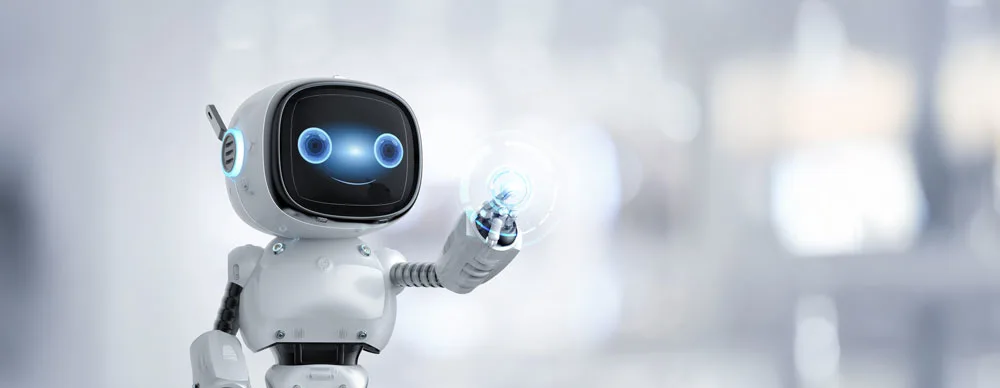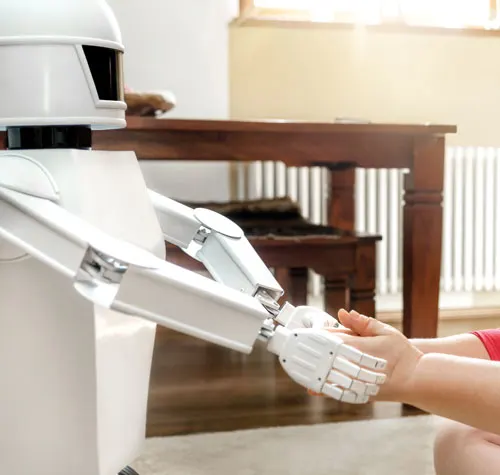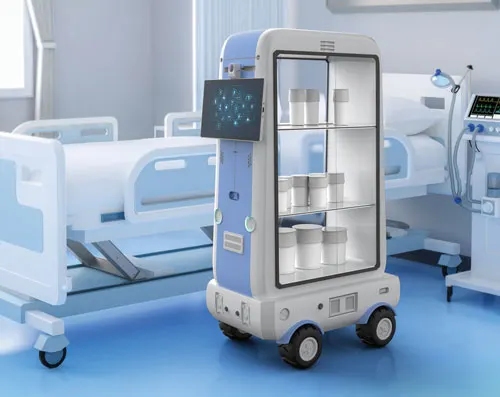Robots: From Playroom to Healthcare
Written By Ibby Smith Stofer
Have you ever met a robot? Was it in the toy section in a healthcare setting or manufacturing site? Have you ridden in a self-driving car?
If asked for your opinion on robotics, what would be your initial response? For me, it has included some humorous memories I will try to share with you as we explore the history of robotics in healthcare.
As I began exploring the topic of robots, my mind jumped to Robert the Robot. I can still see my younger brother and this mechanical marvel. My dad was always on the lookout for the latest gadget that would delight us kids. For me, it was a doll that could walk or an invisible dog on a leash! For my brother (and maybe Dad) a Lionel train that ran under the Christmas tree with smoke and whistles and a milk car that dropped the little cans on the platform. But the star gift was Robbie for my younger brother, Doug. Robbie, as Doug called him, moved, he talked and best of all you could control him, ask him to deliver or move things! He even talked on the phone! Was he a toy or a look into the future? That was the question that many asked back in the early 50’s. In a video on Robbie, they raised a similar question: describing his
piercing eyes they ask “perhaps he is only looking into the future.” An interesting memory, but not what I wanted to explore with you.While healthcare has seen significant and dramatic technology improvement over the past few decades these questions are still being discussed everywhere, from R&D design for medical devices, to manufacturing and certainly in the healthcare community by both patients and care givers.
Overtime the concept of robotics has transitioned from the playroom to multiple sites including manufacturing, retail, healthcare, delivery services and yes, even self-driving cars. The question of whether it is a blessing or designed to eliminate human touch and jobs is often debated. People wonder what will come next. Struggling small businesses are turning to robotic delivery devices and or those that can create your next Big Mac and fries. They show up for work, don’t require benefits, and aren’t subject to the minimum wage laws that have left many businesses struggling or sadly out of business.
But let’s turn our focus back to the healthcare area. Some of the top concerns of providers and patients alike include:
. Staff shortages, supply chain bottlenecks and shortage backlogs, provider burn out, tedious record keeping and inefficient emergency supply deliveries, utilizing clinical staff to serve patients and not do chores are among some of the challenges facing healthcare providers.
. Patients want easier access to care, prompt diagnosis and treatment, and the choice of care centers that are more affordable and convenient. Some need transportation or virtual care due to location or mobility. And some need companionship and reassurance during times requiring medical stays or ongoing monitoring.
Some of the solutions that robotics and related developments offer include Telemedicine, automated online scheduling of visits, supported access to transportation to improve patient access, kiosk for sign in, the introduction of robotic surgery devices, AI diagnostics and more.
Utilizing robots for cleaning, moving supplies to the point of care, and patient lifting and reducing risk of falls as well as in home patient monitoring.
AI is exploding as a diagnostic tool, while in room voice recordings are minimizing time consuming documentation tasks.
All these inventions or improvements in care are for the most part viewed
favorably by both patients and care givers. Yet there are some who still wonder if a robot will replace their job, or if a robot can really provide the same level of care, or diagnosis as people who have spent not only years in school, but many years in the practice of medicine.We will probably never answer all the myriad of questions and challenges that progress raises but it does remind me of one more personal memory I want to share in closing.
My mom was a registered nurse who had a great sense of right and wrong. She taught us to question and explore different alternatives. She also had a sharp tongue and was not one to be intimidated by title.
One day she overheard a group of doctors discussing computers. This was in the early 70’s, shortly after the idea that computers would help physicians and clinicians improve care was being explored and widely discussed. Amused by the doctors’ excitement over how these new inventions would change their profession, she chimed in with this wisdom: “A computer will never be able to put a patient on a bed pan!”
As shown in the accompanying photo, maybe not a computer but a robot can!
The next time you are in a hospital or other care center you may run into some of their newest staff. Say hello to the nursing and patient assistants and if you require surgery, you may meet others or see them in action.



